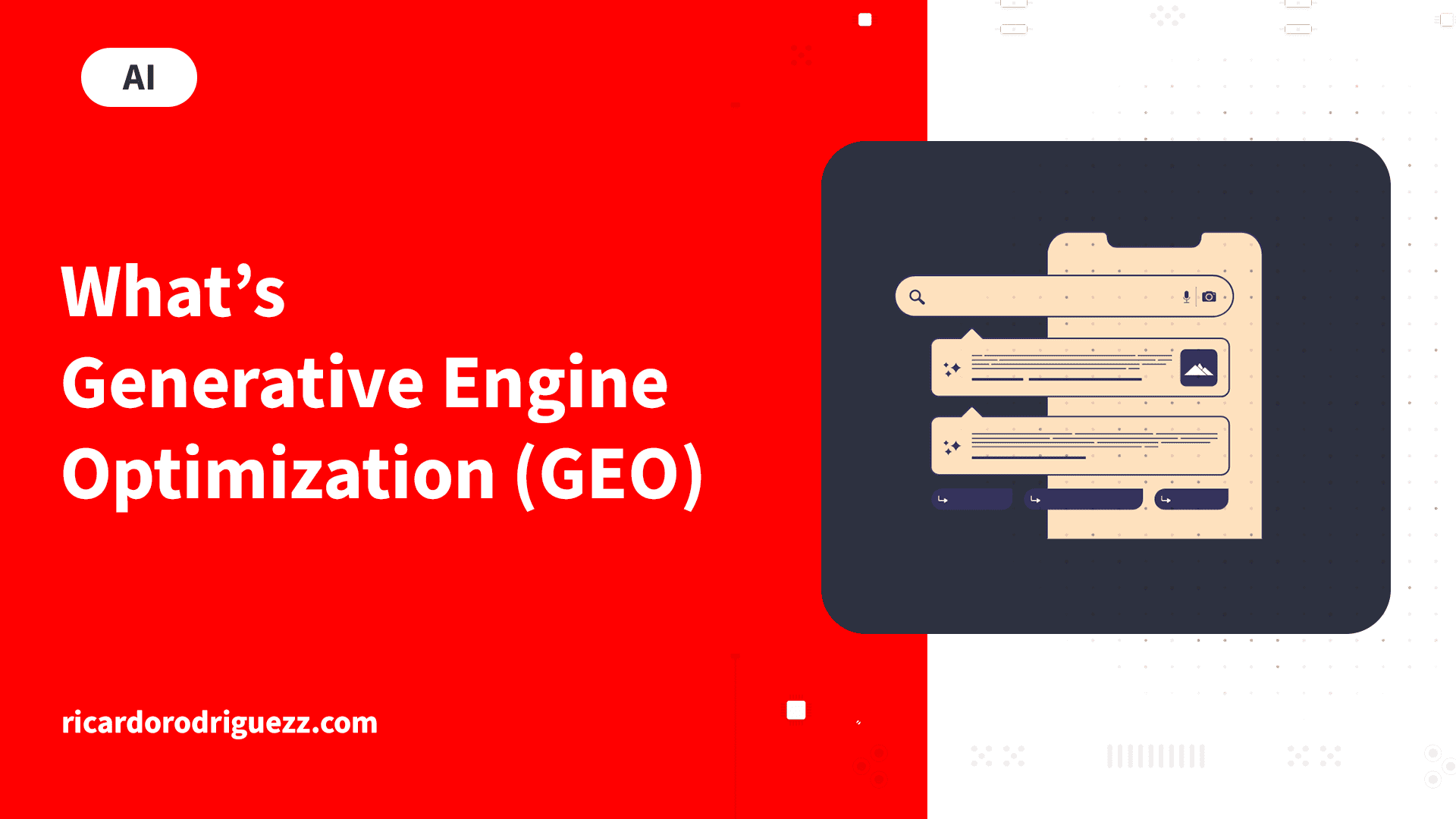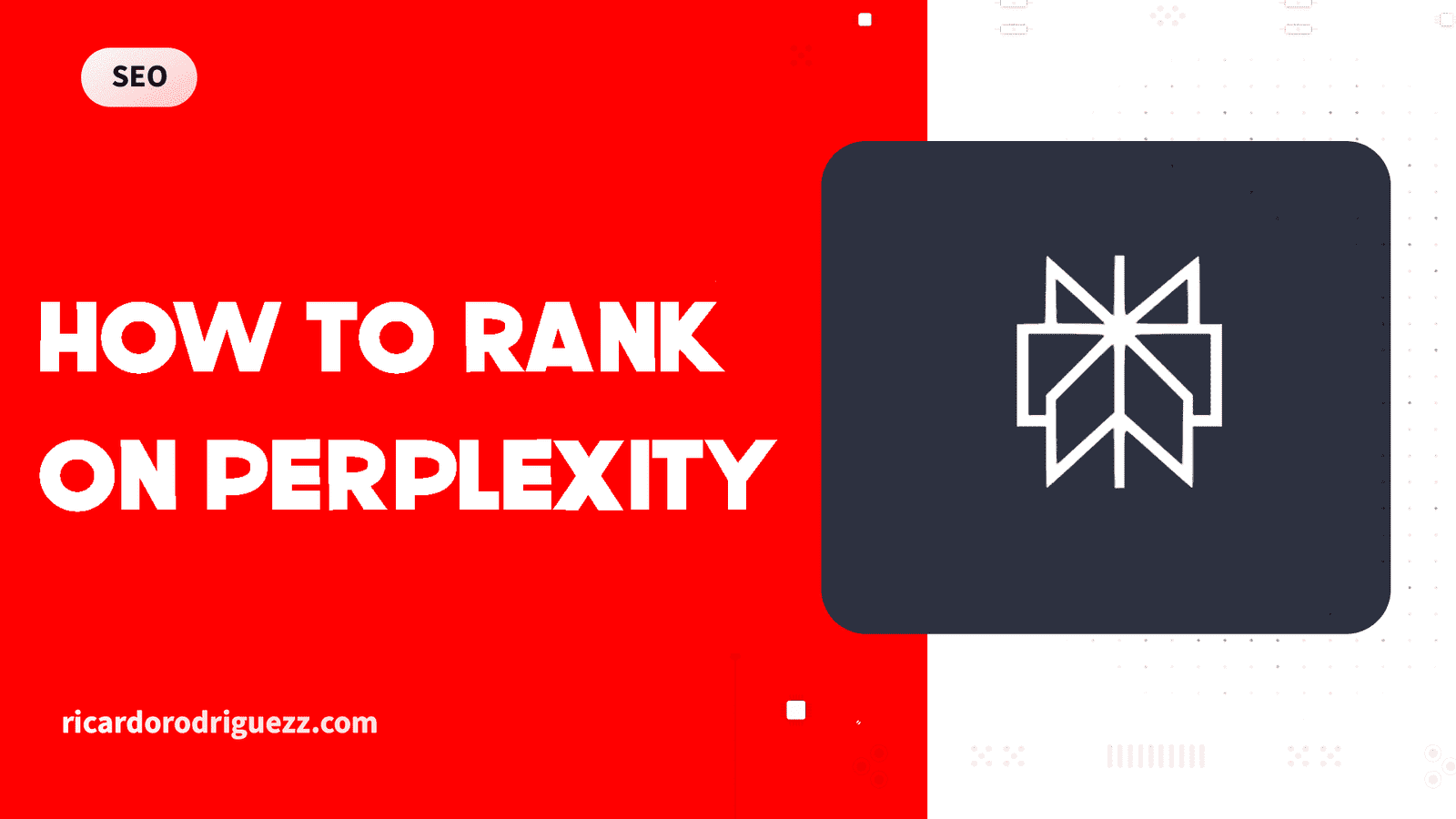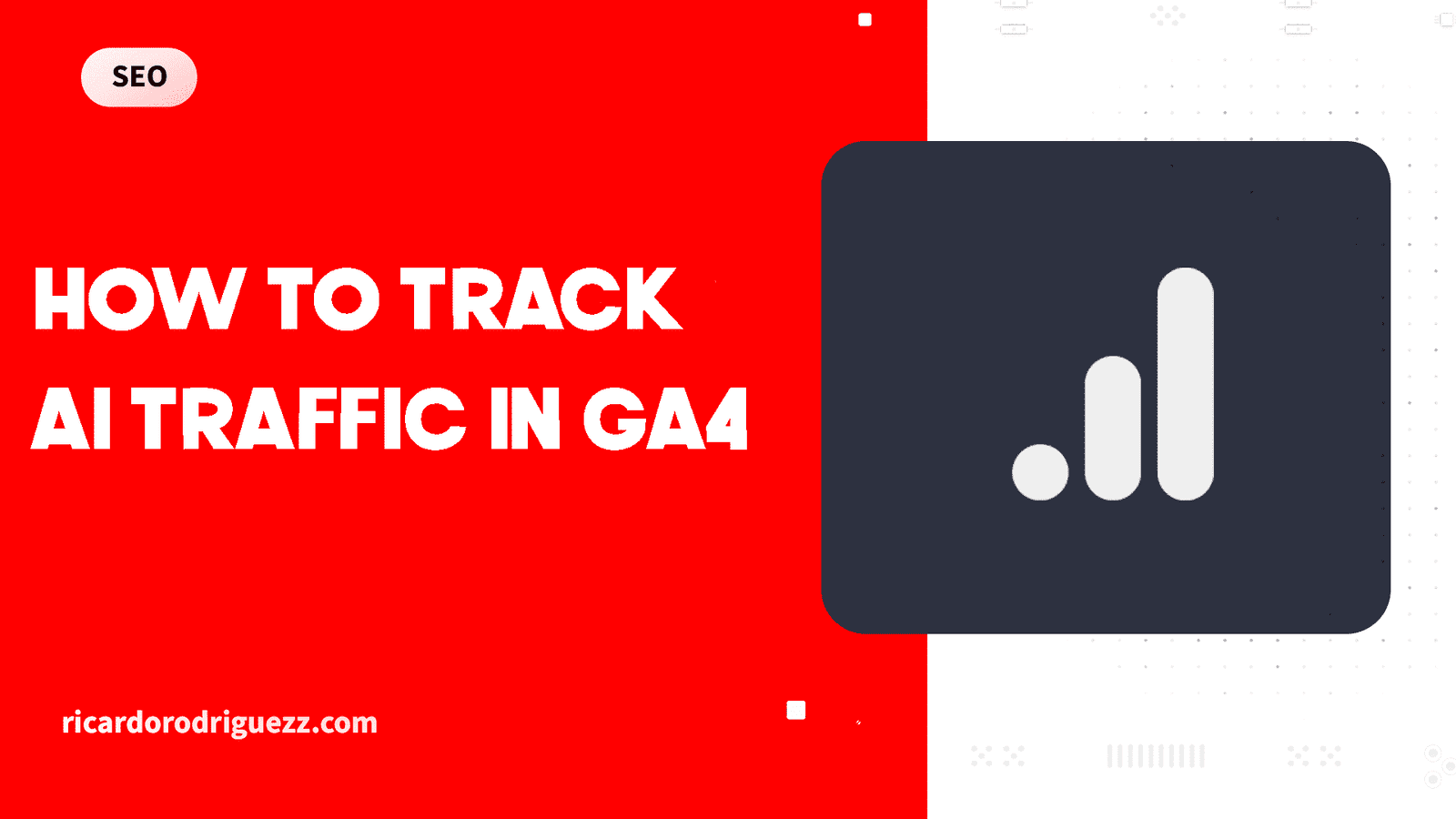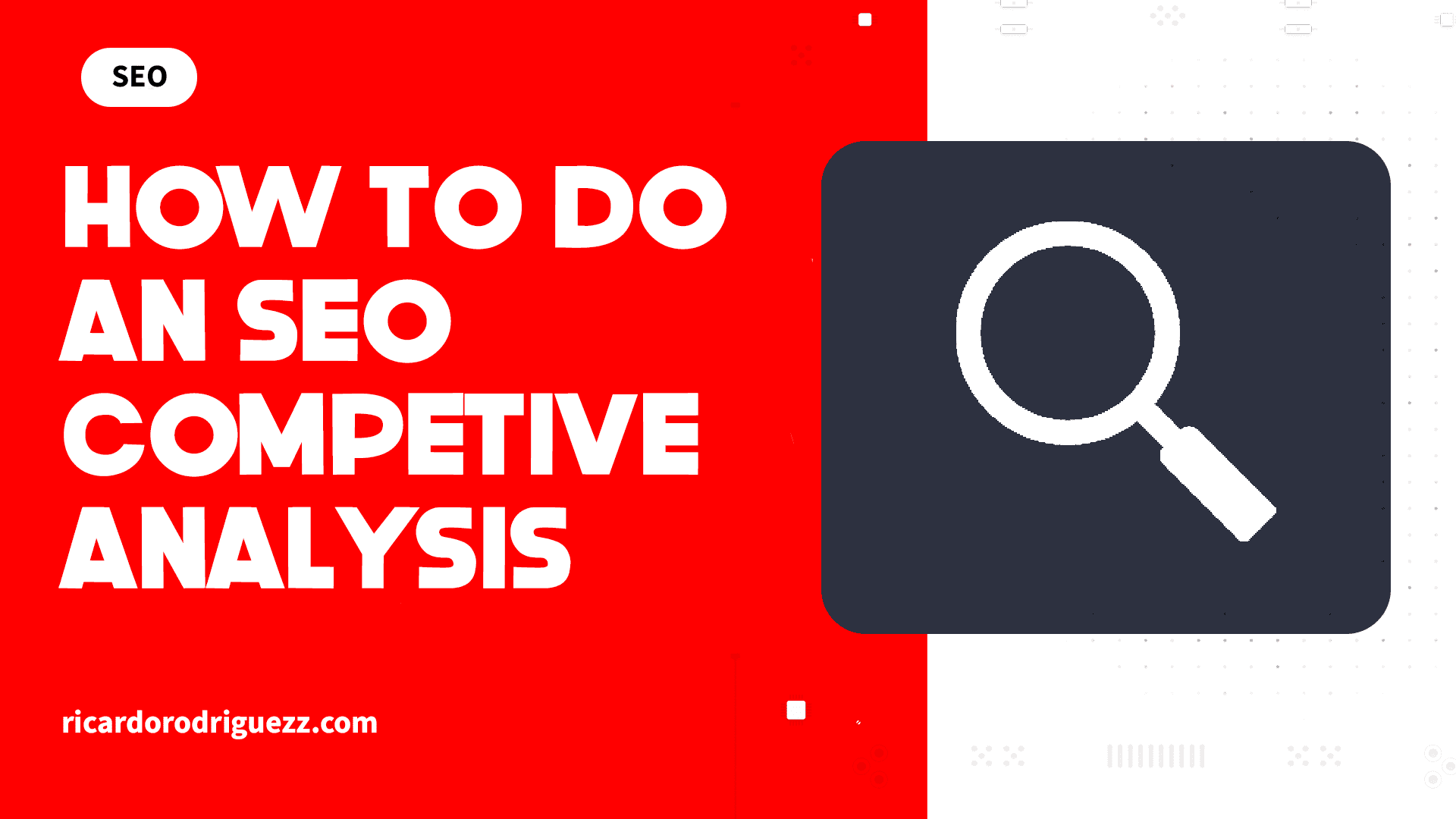As we head into 2025, digital marketing is moving at lightning speed. For marketers, content creators and business owners, staying ahead of the game is key, especially when it comes to Search Engine Optimization (SEO). But traditional SEO is no longer the main event. Enter Generative Engine Optimization (GEO), the new frontier in digital visibility.
What is GEO: The Next Evolution of SEO
Generative Engine Optimization, or GEO, is the process of optimizing your website to be visible in generative search engines and AI-powered platforms like ChatGPT, Claude or Google’s Gemini. Unlike traditional SEO which focuses on ranking in search engine results pages (SERPs), generative engine optimization is about making your content more discoverable and relevant in AI-generated responses.
GEO is driven by several factors that have changed the digital landscape in recent years. One of the biggest is the change in user search behavior. As we head into 2025 more and more people are turning to AI chatbots and generative search engines for information, rather than traditional search engines. This is not a trend, it’s a fundamental change in how users interact with digital information.
Why GEO (Generative Engine Optimization) matters in 2025
ChatGPT’s availability to all users in 2024 will also contribute to this shift. ChatGPT is expected to grow 1% in 2025 within the search engine market share. This means a growing user base that’s comfortable with and prefers AI-generated responses to traditional search results
The shift towards Generative Engine Optimization is driven by:
Changing Search Behavior: Users are turning to AI chatbots and generative search engines for information, rather than traditional search engines.
Market Share Shifts: Google still leads but its market share has decreased, alternative search engines and AI platforms are gaining ground.
Ad Saturation: The more ads in traditional SERPs are pushing users towards cleaner, more direct information sources like AI chatbots.
Algorithm Volatility: Google’s frequent core updates have made traditional SEO more unpredictable, marketers are forced to diversify their strategies.
The Google Dilemma
Interestingly, despite the decrease in market share, Google’s revenue has continued to grow year over year. This paradox can be explained by Google’s focus on advertising. Google has been pumping out more ads in their search engine results pages (SERPs), making it harder for users to find organic results. This strategy while boosting short term revenue has led to user frustration and a gradual exodus to alternative search platforms.
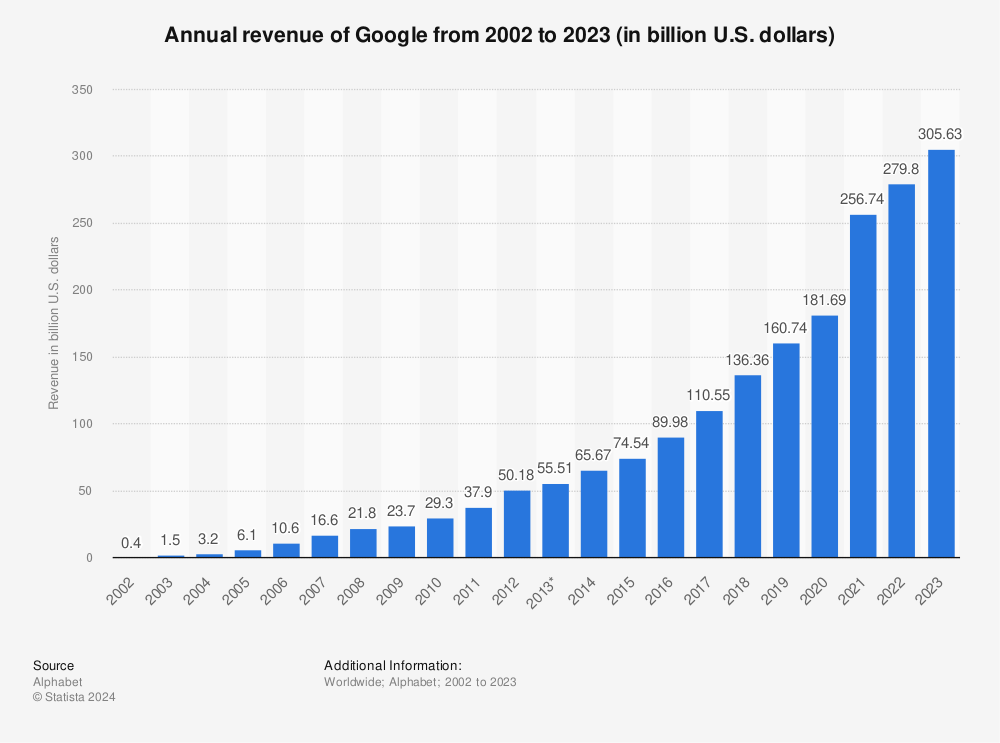
Also, Google has introduced new features like AI overviews (previously SGE) that take up a lot of real estate on the SERPs. While these features are meant to provide quick answers, they’re pushing organic results further down the page, making it harder for websites to get visibility through traditional SEO methods.
Generative Engine Optimization Strategy Pillars
To optimize for generative engines you need to focus on two main pillars: content creation and link building. While technical SEO is still important, these two are where chatbot LLMs (Large Language Models) look when retrieving data for responses.
Content
Content for Generative Engine Optimization is more than just churning out a high volume of articles. It requires a strategic approach that aligns with how AI systems process and understand information. Here’s what to consider:
- Intent Matching: Create content that matches the user intent behind the target keywords. AI systems are getting better at understanding context and nuance, so your content should answer the questions users will ask.
- Keyword Optimization: While keyword stuffing is dead, strategic keyword placement is still important. Include target keywords naturally throughout your content, with an appropriate keyword density. This helps AI systems understand the main topics and themes of your content.
- Content Structure: The structure of your content matters on how easily AI systems can parse and understand it. Use clear, descriptive headings and subheadings (H1, H2, H3, etc.) to organize your content. Break down information into bite sized paragraphs and use bullet points or numbered lists sparingly for key points or steps.
- FAQs: Having a FAQs section can be helpful. This not only answers common user questions directly but also increases the chances of your content to be featured in Google’s “People Also Ask” section.
- Up-to-Date Information: Make sure your content has the latest and accurate information. AI systems prioritize factual and current data when generating responses.
- Multimedia: Include relevant images, videos and infographics in your content. While AI systems may not “see” these elements directly, they can understand their presence and relevance through proper tagging and descriptions.
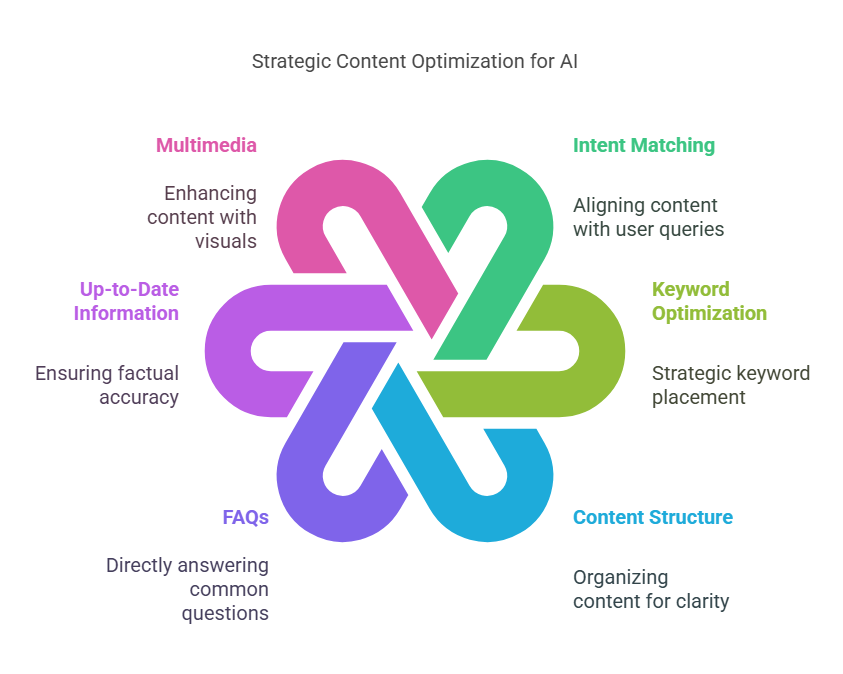
Link Building and Brand Mentions
In the Generative Engine Optimization era, link building is more important but with a twist. Here’s what to focus on:
- Quality Over Quantity: Get high quality backlinks from authoritative sources in your industry. These links are votes of confidence for your website in the eyes of both search engines and AI systems.
- Brand Mentions: Increase your brand visibility and credibility through mentions across the web without direct links. AI systems can recognize brand mentions and use them as a trust signal when determining the relevance and authority of your content.
- Diverse Link Profile: Go for a natural and diverse link profile. This includes a mix of dofollow and nofollow links and links from different types of websites (news sites, industry blogs, academic institutions etc.).
- Content-Driven Link Building: Create high quality, shareable content that naturally attracts links. This could be original research, comprehensive guides or unique insights into your industry.
- Digital PR: Do digital PR to increase brand mentions and backlinks. This could be guest posting, participating in interviews or creating newsworthy content that journalists and bloggers want to reference.
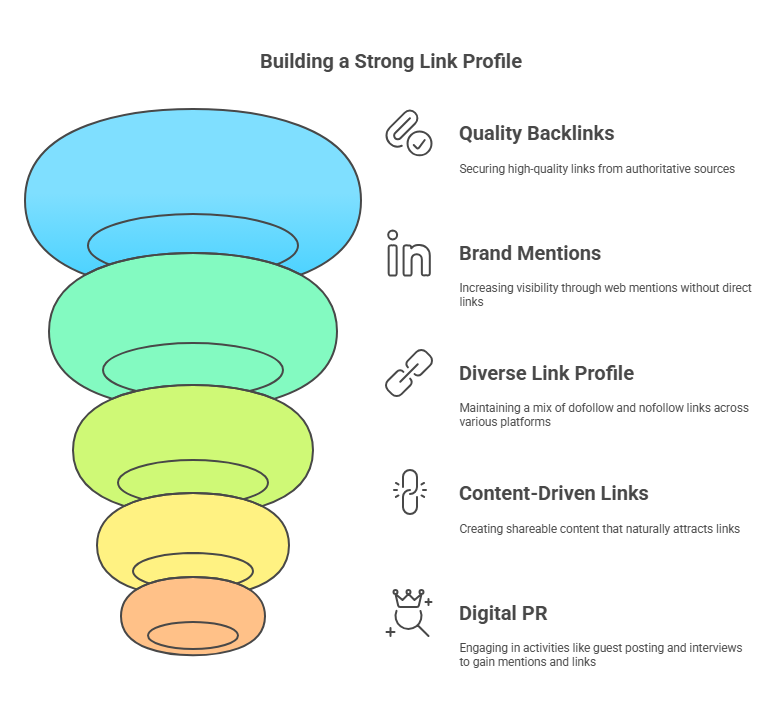
How to Optimize for GEO
Now that we know the pillars, let’s dive into the strategy:
1. Content Structure
The structure of your content matters for AI readability. Here’s how to optimize:
- Use clear, descriptive headings and subheadings (H1, H2, H3, etc.) to organize your content.
- Break down information into bite sized paragraphs. 2-3 sentences per paragraph for better readability.
- Use bullet points or numbered lists sparingly for key points or steps.
- Include a table of contents for longer articles to help users and AI systems to navigate your content.
2. Structured Data
Structured data helps AI systems to understand the context and meaning of your content. Here’s what to do:
- Use the right schema for your content type (e.g. Article, LocalBusiness, Product).
- Make sure your structured data is accurate and up-to-date.
- Use Google’s Structured Data Testing Tool to test your implementation.
- Consider implementing FAQ schema for relevant pages to increase your chances of being featured in featured snippets.
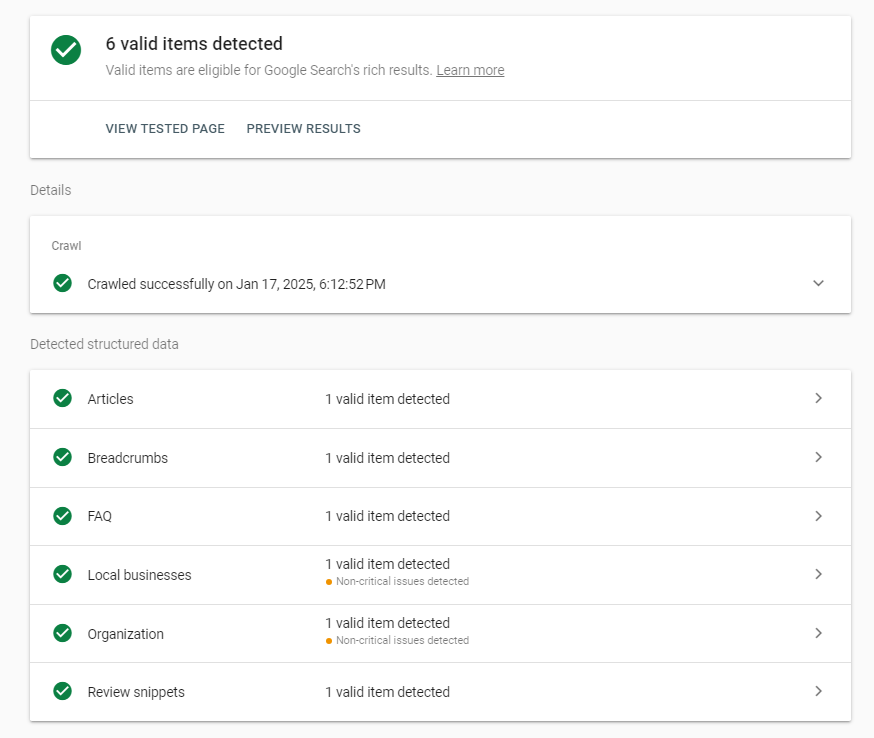
3. E-E-A-T
Focus on Experience, Expertise, Authoritativeness, and Trustworthiness in your content:
- Show author expertise by including author bio with credentials.
- Provide original insights, data or research wherever possible.
- Link to reputable sources to back up claims and statistics.
- Update your content regularly to keep it fresh and relevant.
4. Optimize for Multiple Platforms
Don’t put all your eggs in one basket:
- Optimize for Google and Bing as many AI platforms use Bing’s index.
- Optimize for emerging AI powered search engines.
- Make your content accessible and readable across different devices and platforms.
5. Multi-Format Content
Diversify your content to cater to different user preferences and increase visibility:
- Include images, videos and infographics in your content.
- Optimize multimedia elements with descriptive file names, alt text and captions.
- Consider creating podcasts or webinars to support your written content.
6. Strong Backlink Profile
Quality over quantity for backlinks:
- Get high quality backlinks from authoritative sites in your industry.
- Do digital PR to get brand mentions across the web.
- Create linkable assets like original research, infographics or comprehensive guides.
- Participate in industry events, webinars or podcasts to get natural backlinks and mentions.
7. Monitor and Adapt
GEO is still evolving so stay alert:
- Check regularly how your content appears in AI generated responses.
- Use ChatGPT to see if your content is being mentioned in responses to relevant queries.
- Keep up to date with AI algorithm updates and adjust accordingly.
- Analyze your website performance and make data driven decisions.
AI Driven Search Engines are Here
As we move into 2025 and beyond in digital marketing, it’s clear GEO is not a trend, it’s a new SEO. The move to AI search and the changing search engines have made it necessary to adapt.
In summary, GEO is a new way of thinking about online visibility. It’s not about manipulating a system but about providing real value and information in a format that users and AI can understand and use. As we move into 2025 and beyond the businesses that get this will be the ones that succeed in the digital world. Get in touch with the best freelance SEO consultant today and get your business ranking in ai driven search engines now!

